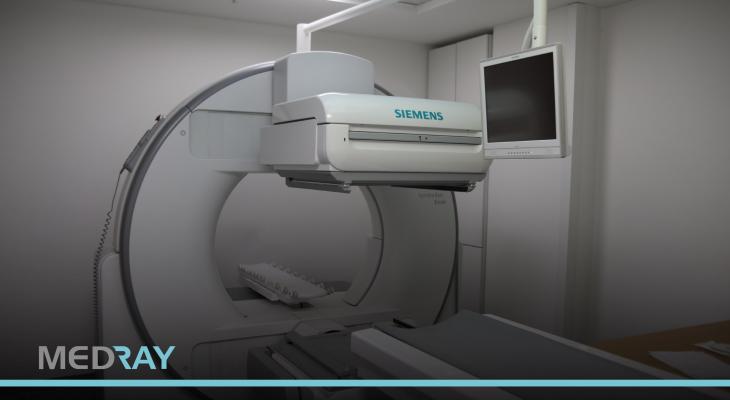
Gamma Camera
Gamma Camera
A radionuclide scan (also known as a radioisotope scan) is an imaging technique used to visualize parts of the body by injecting a small dose of a radioactive chemical into the body.
These chemicals localize to specific organs and tissues depending on the type of substance used and then emit small beams of radiation (called gamma rays) that can be detected by the gamma camera. Radionuclide scans are used in various fields of medicine such as identifying areas of infection or excess bone turnover. Bone scans and thyroid scans are common examples of radionuclide scans. In the gastrointestinal tract they can be used to identify sites of bleeding, measure the extent of inflammation and assess the movement of food substances through the stomach , heart scan can assess blood flow to the heart muscle. Areas of poor blood flow to the heart muscle do not ‘take up’ the radionuclide very well and this will be shown in the picture.
Depending on the type of scan you have, you usually either swallow a small quantity of radionuclide, or it is injected into a vein in your arm. It then takes some time – sometimes several hours (depending on what is being scanned) – for the radionuclide to travel to the target organ or tissue, and to be ‘taken’ into the active cells. So, after receiving the radionuclide you may have a wait of a few hours. You may be able to go out and come back to the scanning room later in the day.

Subscribe us on YouTube
Back to Home Page
